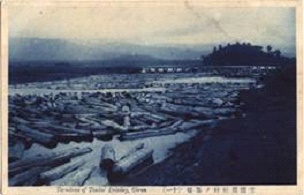 |
Terminus of Timber Driving, Giran
During the Japanese Occupation, the Japanese government was actively engaged in forest resources exploitation in Taiwan by first deforesting the area of Mount Ali in Meiji period and then logging the section of Mount Taiping in 1915 (4th year of Taisho period). Taiwan Red Cypress and Taiwan Yellow Cedar are the most valuable wood. Mount Taiping especially amassed the most abundant wood resources in Taiwan.
(Purchased by ITH, Identifier: T020302_03_0121) |
 |
A View of the Tainan-Ampin Canal, Formosa. (Tainan)
Ampin Port was the important harbor from which European culture was imported 300 years ago. Chinese sailing ships (Junk) could navigate Tai-jiang inland sea which is between Ampin and Tainan.
(Purchased by ITH, Identifier:T020302_04_0162) |
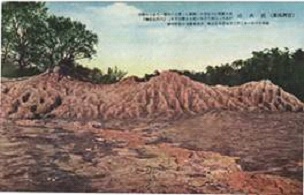 |
Mud Volcano (Kaohsiung, Taiwan)
This area consists of fine-grained and loosely composed mudstone which is hard to walk on. Even grass cannot survive. Hence, it is called the “Barren Field.”
(Purchased by ITH, Identifier: T020301_03_0208) |
 |
Lin Ben Yuan Garden
This garden locates in Banqiao, Taipei.It is one of the four famous gardens in Taiwan.
(Purchased by ITH, Identifier: T020301_01_0359) |
 |
"MiKado" Pheasants, Peculiar to Taiwan.
Mikado pheasant is an endemic species in Taiwan. The appearance of male Mikado pheasants is extravagant featuring beautiful tail feathers at the length of 50 to 60 cm. Female Mikado pheasants are smaller in size.
(Purchased by ITH, Identifier: T020302_06_0384) |
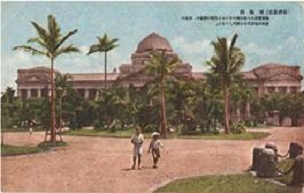 |
The Museum in Taipei
National Taiwan Museum, formerly the Museum of Office of the Taiwan Governor-General, was built to commemorate the fourth Taiwan Governor-General Kodama Gentaro and Head of Civilian Affairs Goto Shinpei. Located in 228 Memorial Park, its exhibits are related to Taiwanese history, customs, animals, geology and minerals.
(Purchased by ITH, Identifier: T020301_01_0437) |
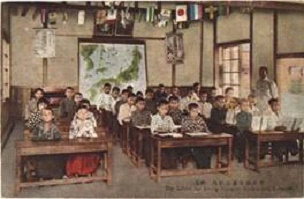 |
The School for Young Savages, Kappanzan, Formosa.
During the Japanese colonial period, the Office of Taiwan Governor-General established schools of compulsory education for indigenous children. Kappanzan now locates in Fuxing Township, Taoyuan County.
(Purchased by ITH, Identifier: T020302_02_0454) |
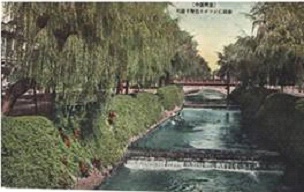 |
The Green River in Spring Rain (Taichung, Taiwan)
The Green River is in the west of Taichung Station at the core of Taichung.
(Purchased by ITH, Identifier: T020301_02_0481) |
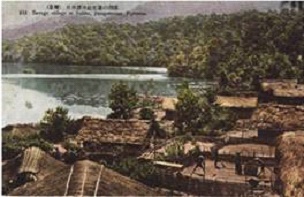 |
Savage Village at Suisha, Jitsugetsutan, Formosa.
This indigenous village locates in Yuchi Township, Nantou County.
(Purchased by ITH, Identifier: T020302_02_0521) |
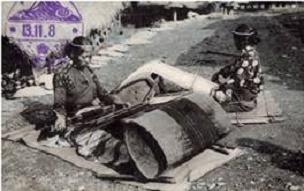 |
The Indigenous Weaving Women in Musha
Musha locates in Ren’ai Township, Nantou County. It was famous since Musha Incident in 1930 (5th year of Showa period).
(Purchased by ITH, Identifier: T020302_02_0573) |
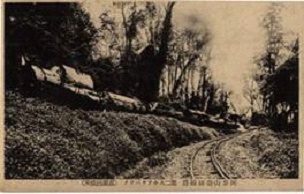 |
The Second Switchback of Mount Ali Rails
The Japanese colonial government built the forest rail in 1912 for forest resources exploitation and transportation in Mount Ali.
(Purchased by ITH, Identifier: T020302_04_0659) |
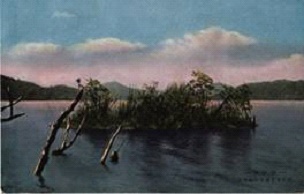 |
The Floating Island on Sun Moon Lake
Sun Moon Lake is the biggest lake in Taiwan. The floating island was an accumulation of humus of aquatic plants. In the Japanese colonial period, the construction of the Sun Moon Lake Reservoir destroyed the landscape and ecosystem of the floating island.
(Purchased by ITH, Identifier: T020301_02_1037) |